
Nature
17:01, 07-Dec-2018
Secrets behind the flamingo's charm
Updated
16:38, 10-Dec-2018
By Ding Qian
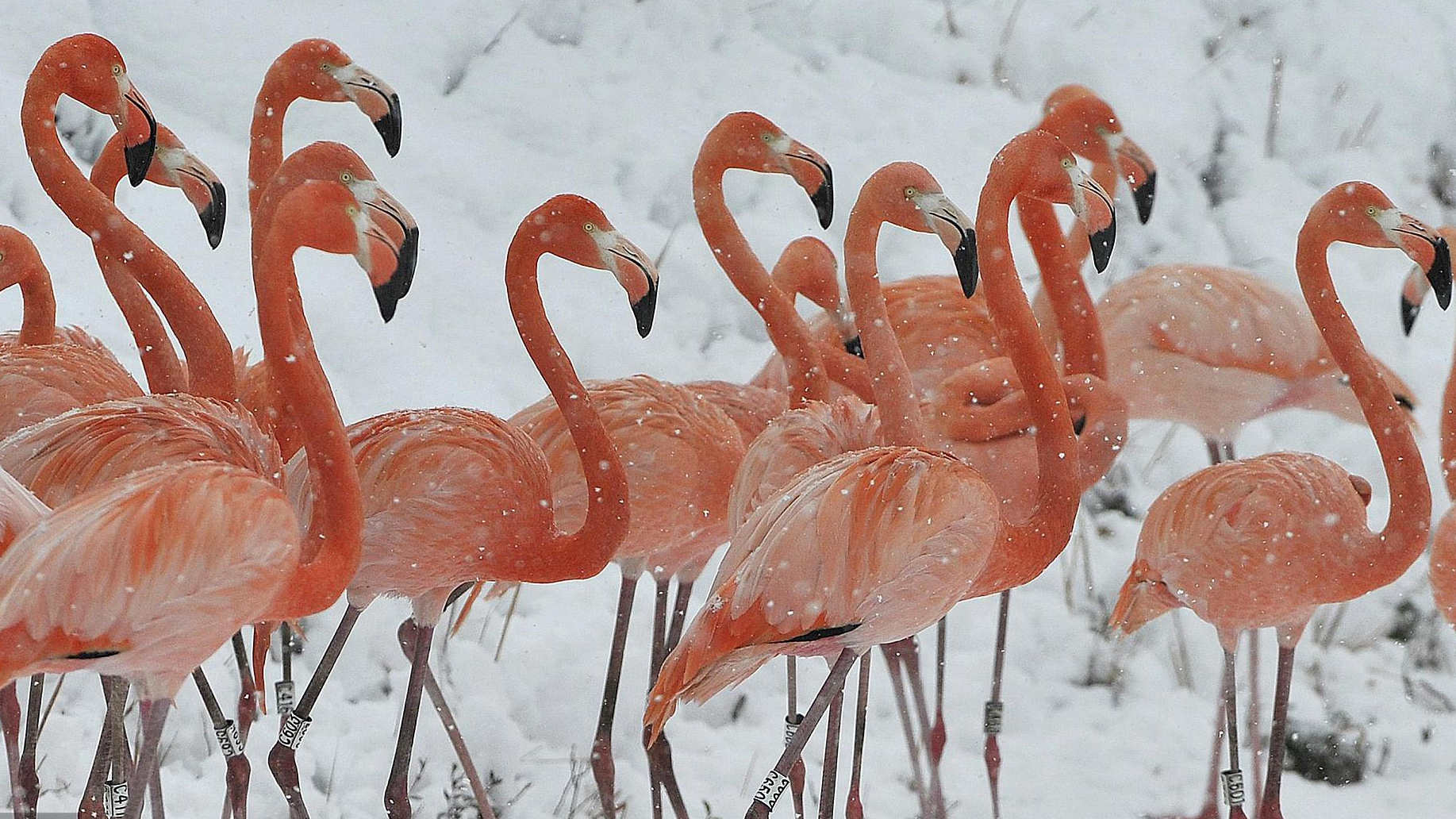
Flamingos are well-known for their lovely pink feathers, S-shaped neck, and long legs. Many people are attracted to their unique beauty.
But there are many common misunderstandings about the bird. What exactly makes them so special? Are they really like those depicted in popular photos?
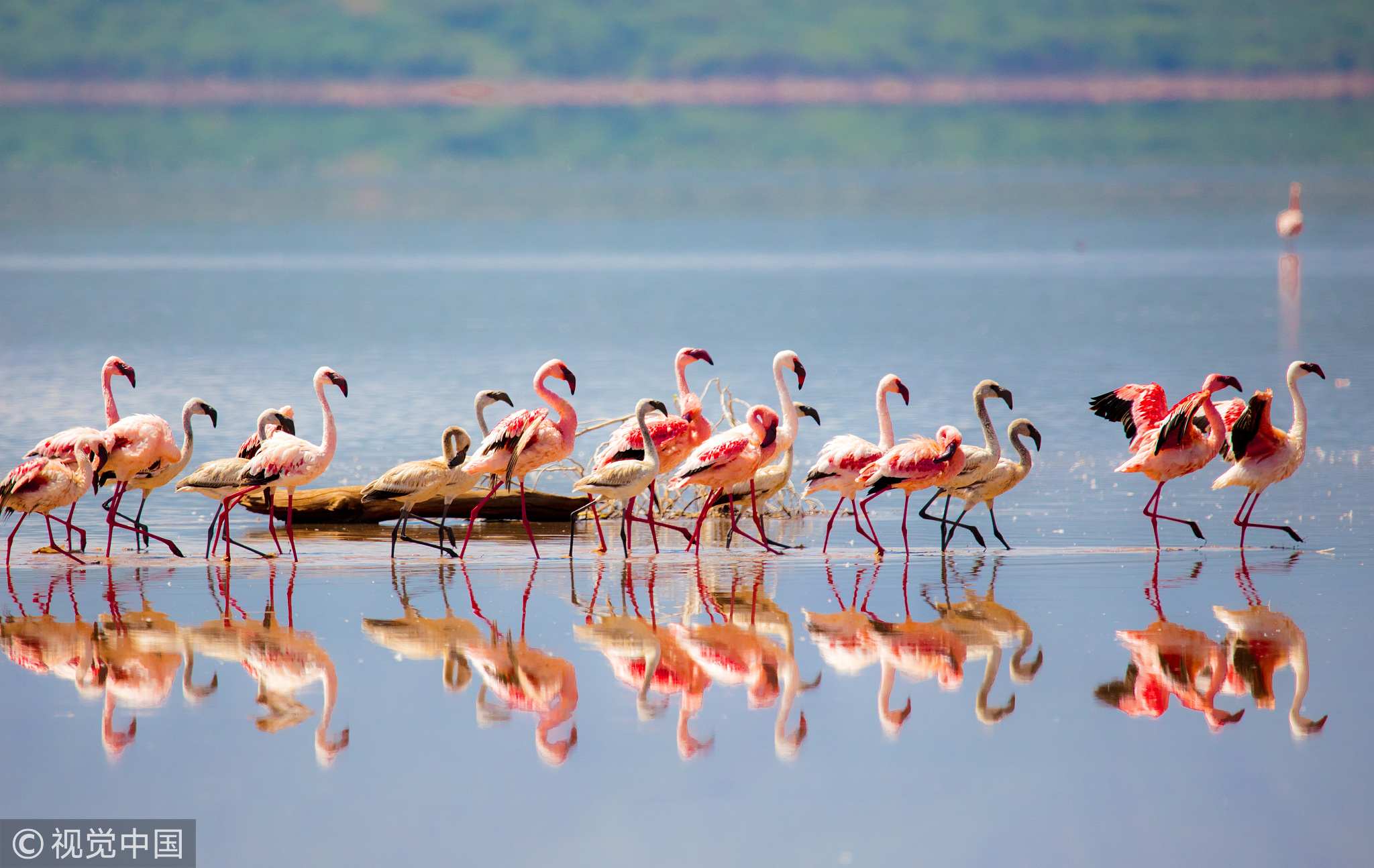
Flamingos /VCG Photo
Flamingos /VCG Photo
Are all flamingos pink?
Not all flamingos are pink. They are actually born with dull grey feathers and gradually turn pink in the wild. The vibrant pink color actually comes from beta-carotene, a red-orange pigment that's found in food that flamingos eat, such as brine shrimp and larvae.

Baby flamingos /VCG Photo
Baby flamingos /VCG Photo
Since the bird eats a large quantity of carotenoid-filled delicacies, its feathers turn pink. Just like if a human eats a lot of carrots which are heavy in carotenoids, his or her skin would become a little yellow.
If a flamingo is kept away from its natural food, it will slowly turn to a white color due to the loss of pigment.

Flamingos stand on one leg. /VCG Photo
Flamingos stand on one leg. /VCG Photo
Why do flamingos stand on one leg?
According to a study published in the Royal Society journal Biology Letters, a flamingo standing on one leg resembles a balanced, upside-down pendulum which could in principle keep balance with little muscle movement. Therefore, it actually requires less effort for them to stand on one leg than it does on two.
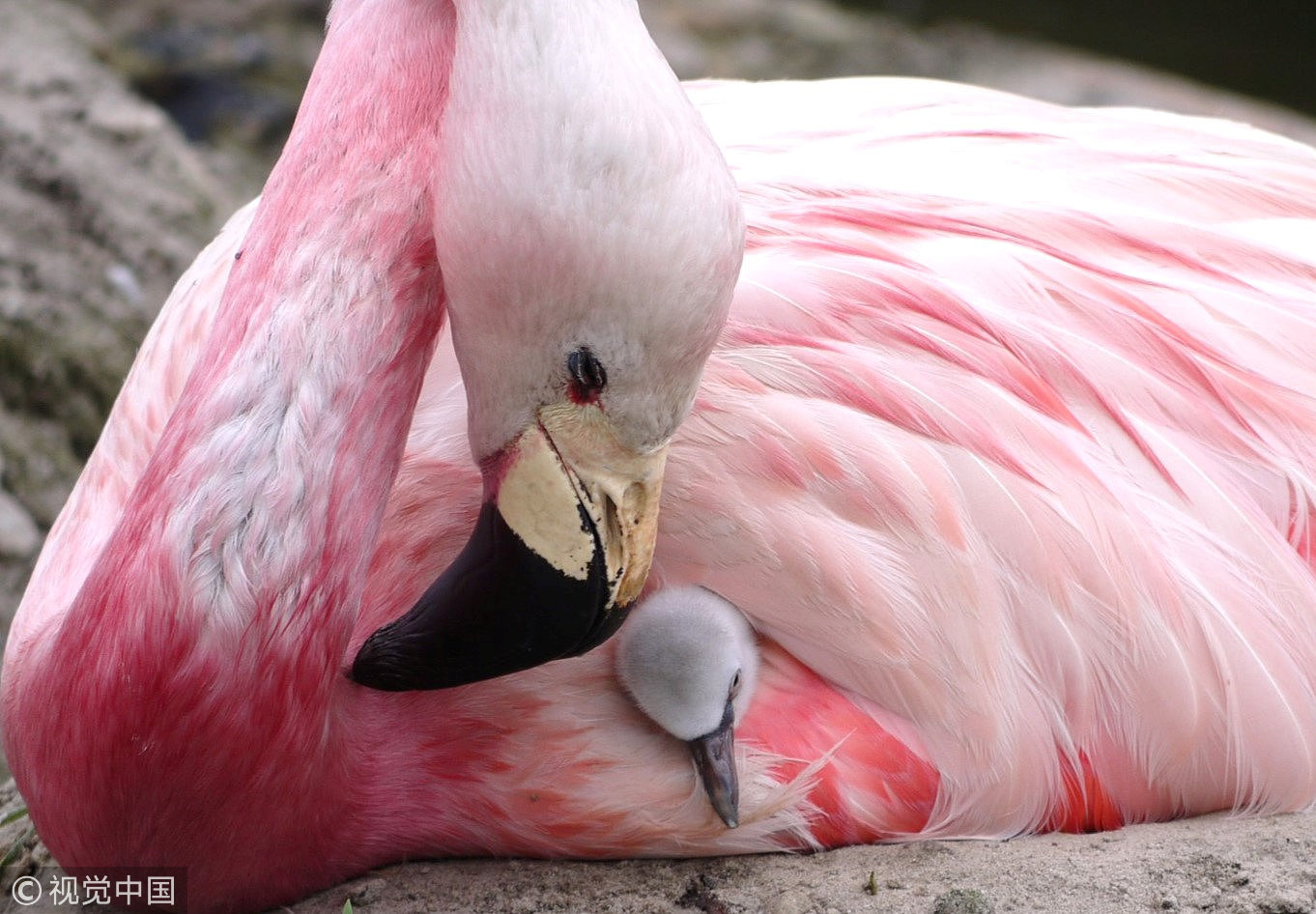
A flamingo and its chick. /VCG Photo
A flamingo and its chick. /VCG Photo
How many eggs does a flamingo lay in a year?
Flamingos tend to only nest once a year. A flamingo reaches sexual maturity when it's between three and six years old. They use mud, stones, and feathers to build their nests before they lay eggs. Most of the time they just lay one large egg.
The mother and father flamingo take turns to incubate and protect the egg after it's in the nest. It usually takes around 30 days for the chick to be born.

Flamingos /VCG P
Flamingos /VCG P
How long can flamingos live for?
Wild flamingos can live for 20 to 30 years. But flamingos in captivity can live up to 50 years or longer. In general, captive flamingos live longer than wild ones, because they are not under the pressure of poachers, predators, or other disasters.
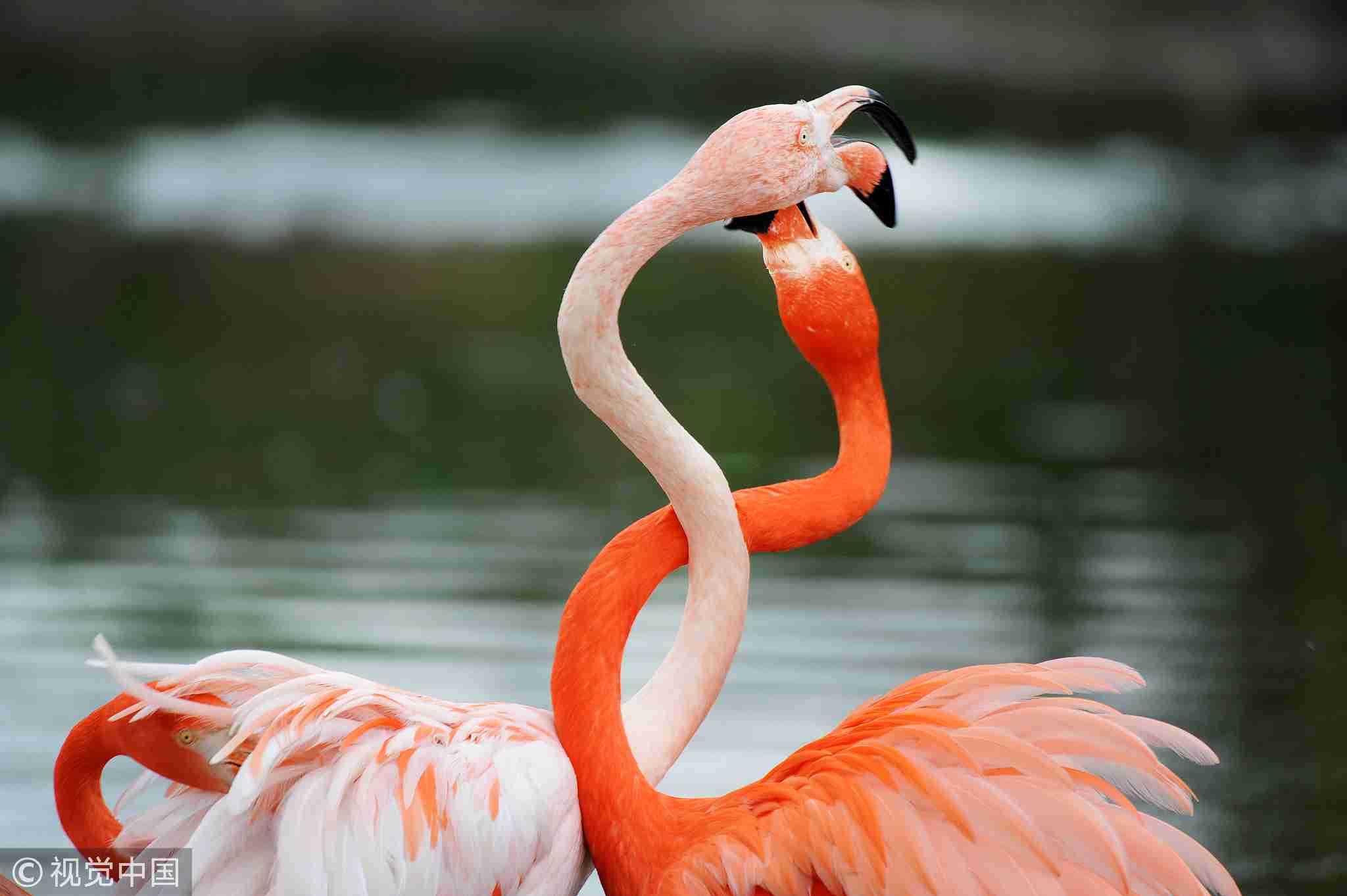
Flamingos /VCG Photo
Flamingos /VCG Photo
What are prominent threats to flamingos?
Eagles and other birds make up the largest group of flamingo predators. They pray on flamingo's eggs and vulnerable chicks. Additionally, wild cats, dogs, and crocodiles are also the main predators of the flamingo. On top of this, habitat loss, and illegal poaching for their feathers also affect their population.
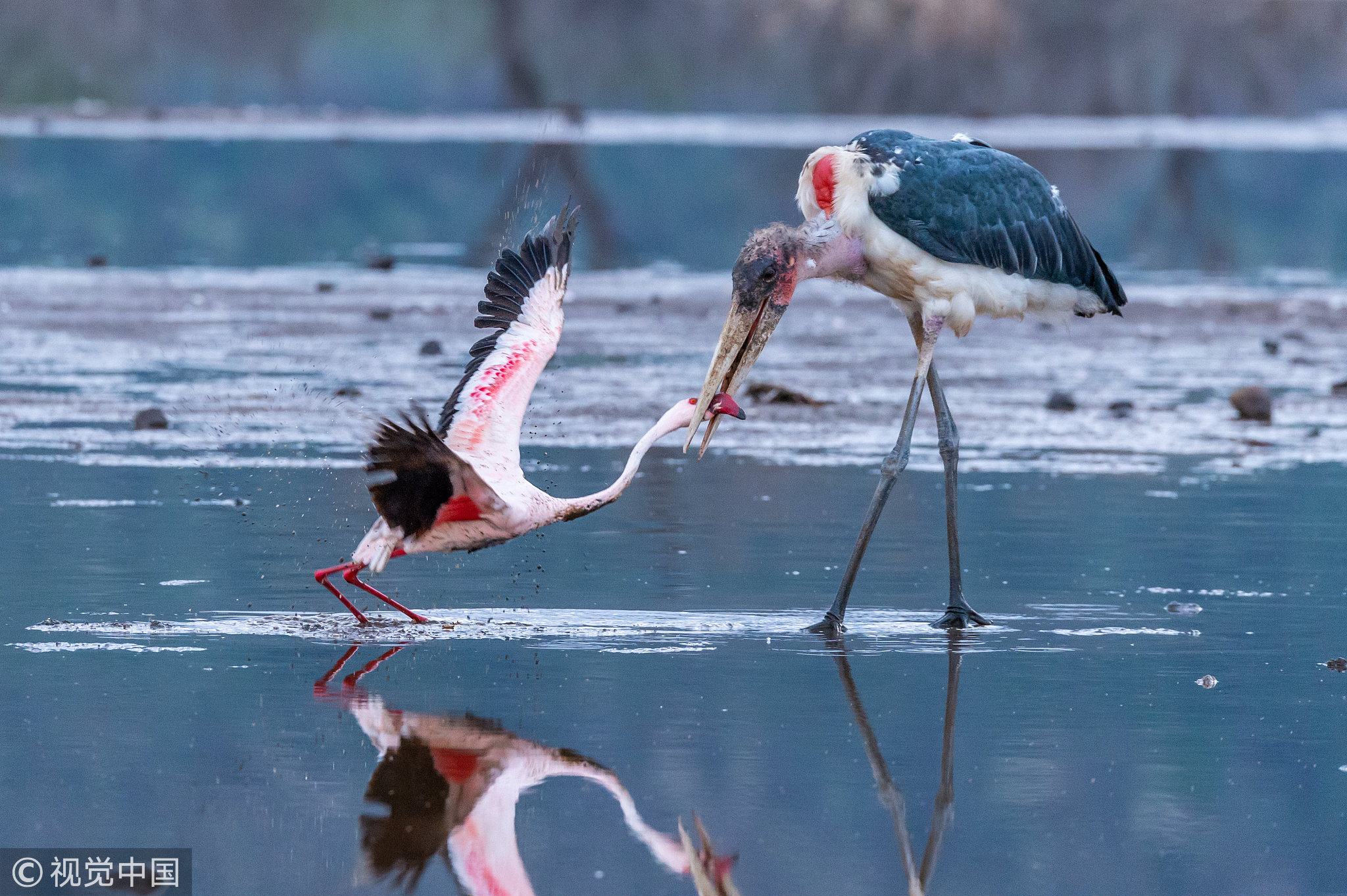
The African marabou stork fights a flamingo at Lake Bogoria in Kenya. /VCG photo
The African marabou stork fights a flamingo at Lake Bogoria in Kenya. /VCG photo
Currently, most flamingo species are not endangered. But the Andean flamingo is the most threatened of all flamingo species, with an estimate of only 30,000 of the birds left in the wild.
According to the International Union for Conservation of Nature (IUCN) Red List of Threatened Species, Andean flamingos are classified as "vulnerable."
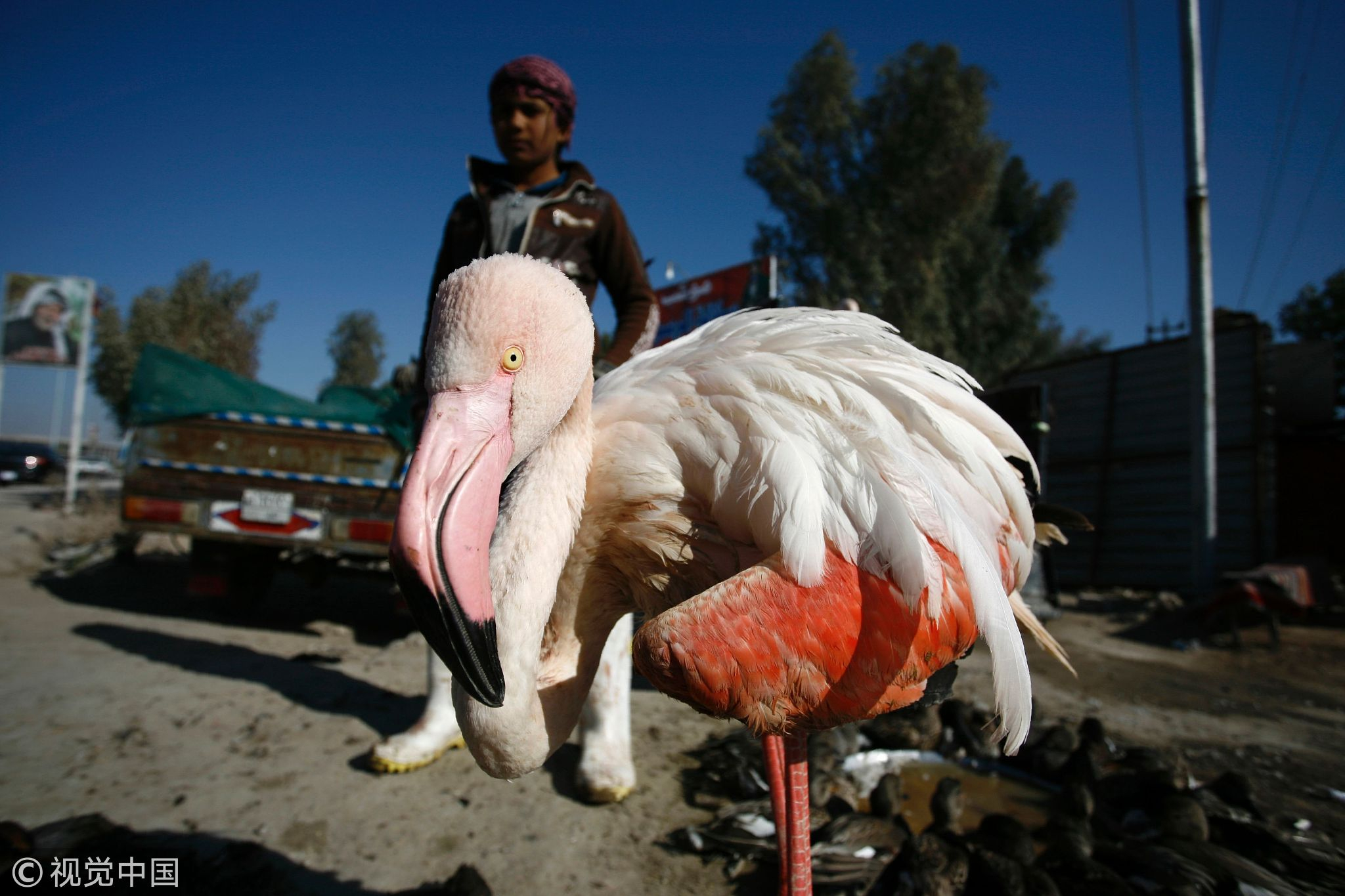
An Iraqi boy stands behind a flamingo bird lined up for sale at a black market in Iraq. They are sold for around 13 U.S. dollars on the Iraqi black market. /VCG Photo
An Iraqi boy stands behind a flamingo bird lined up for sale at a black market in Iraq. They are sold for around 13 U.S. dollars on the Iraqi black market. /VCG Photo
The borax mining business and human disturbance have caused many changes in the bird's habitat. Borax, which is toxic to the bird, can destroy the bird's capacity and cause growing flamingos to develop deformed skeletons. Plus, egg collection also has a negative impact on the bird's population due to the low reproduction rate of the bird.
Various flamingo reserves have been established to protect the species, and maybe in the future, we can see more of these lovely birds around.

SITEMAP
Copyright © 2018 CGTN. Beijing ICP prepared NO.16065310-3
Copyright © 2018 CGTN. Beijing ICP prepared NO.16065310-3